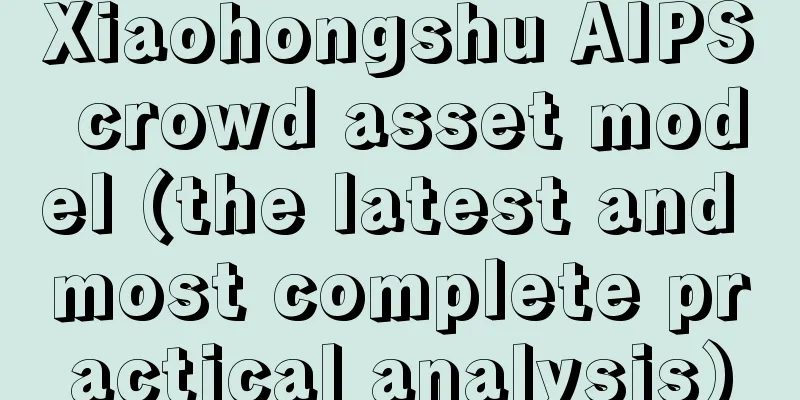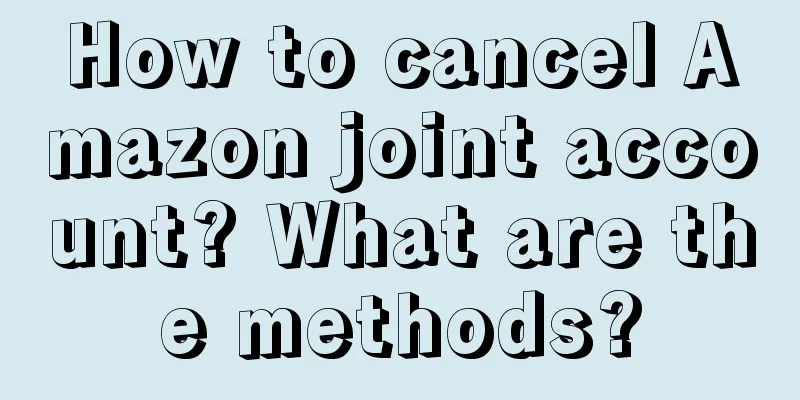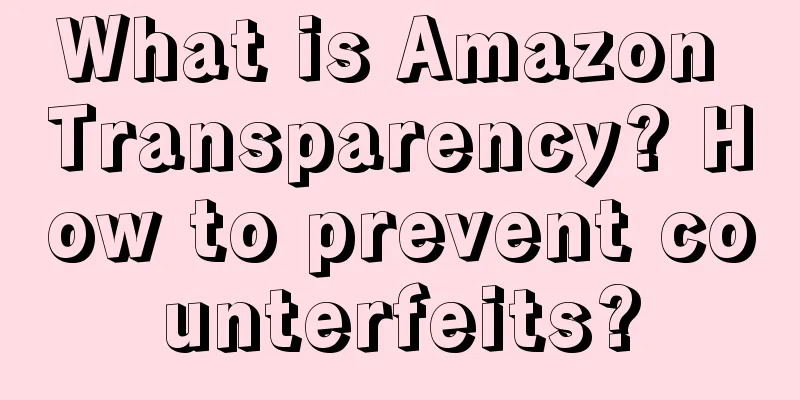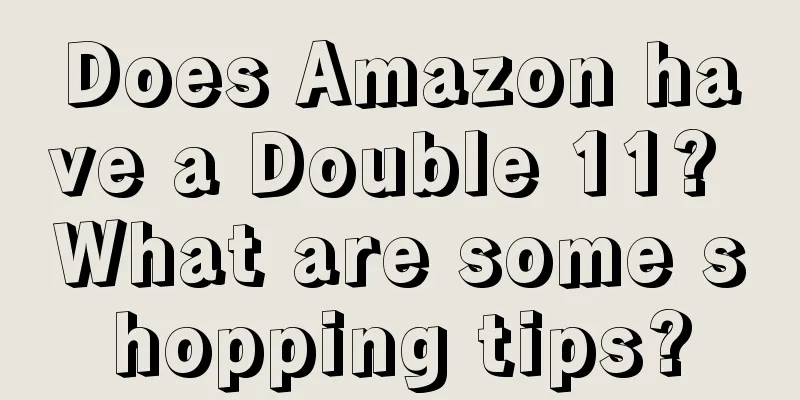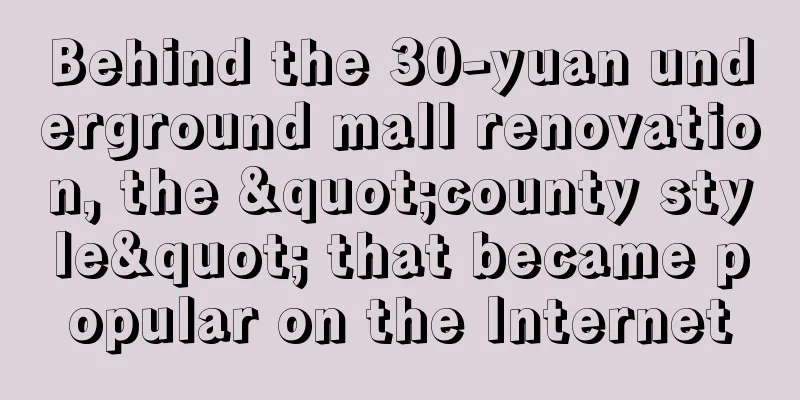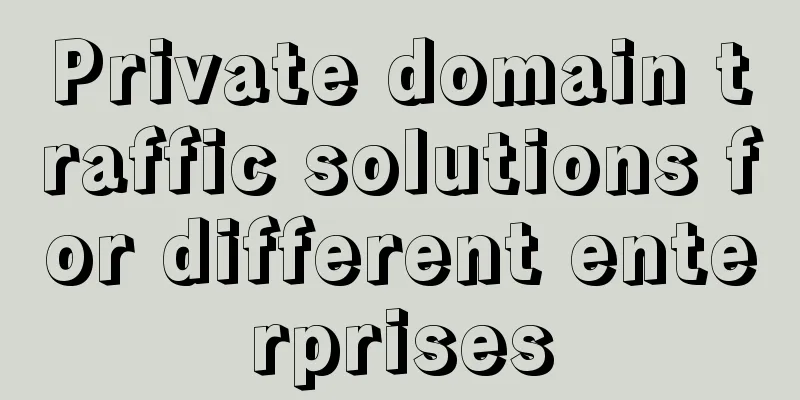After the brand went crazy, it actually sold like crazy!
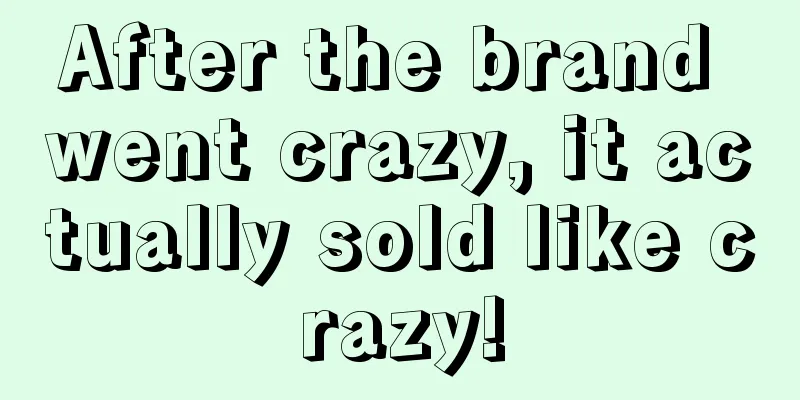
As a new attempt at brand marketing, "crazy marketing" derived from "crazy literature" has set off a craze on social networks. Originally, "crazy literature" was created by netizens through exaggerated and absurd methods, such as emoticons, Zhen Huan style, Qiong Yao-style dialogues, online discos, etc., which was widely spread on the Internet and became an important way for people to vent their emotions and relieve mental stress. After realizing the social communication potential and popularity of "crazy literature", some brands have also started crazy mode, using contexts familiar to the audience to approach the target audience, attracting consumers to have a deeper emotional connection with the product or brand, and also gaining a lot of traffic and goodwill. 1. After the brand went crazy, it sold like crazyAlthough they are all crazy marketing, there are some differences. Brands either go crazy on time or at any time, and they have created their own marketing characteristics. For example, on Monday morning, Luckin Coffee delivered its 9.9 yuan coffee coupons on time, allowing customers to drink popular coffee every week. At the same time, Luckin Coffee also celebrated the "birthday" of its products, offering 50% off coupons on the anniversary of each product to boost sales. The brand also achieved product promotion and sales through fixed time and fixed methods. KFC also uses crazy marketing to break out of its circle. It has fixed discounts and promotions every Thursday, which has become a synonym for its brand characteristics. The "Crazy Thursday Literature" derived from KFC's Crazy Thursday has become a social language for communication between users, such as V50, Today is Crazy Thursday, etc. Some brands choose to go crazy on time and relax in moderation. Some brands choose to go crazy at any time, with personified chicken feet, sometimes "clucking", sometimes running to popular cities and scenic spots to check in, and sometimes turning into a worker to slack off... Lao Xiang Ji, which has a strong sense of the Internet and does not lose its warmth, has become a "street wanderer" and a hot spot on the Internet by going crazy continuously. According to the prospectus of Lao Xiangji, the brand achieved revenue of 2.6 billion and net profit of approximately 200 million from January to June 2023. Its revenue capacity cannot be underestimated, and it further proves that brands that know how to go crazy are really "selling like crazy." Moreover, showing your face in different ways is more likely to win users’ favor. For example, RIO Cocktail has insight into the psychological state of workers facing unfair treatment in the workplace, and uses allusions such as "Daiyu burying flowers" as the source of inspiration for its creation, opening up a mode where Daiyu "spokes for" workers, with crazy and sarcastic words, and Daiyu "getting drunk at work" to rectify the workplace, which has won the public's favor. In addition to going crazy on time, at any time, and taking advantage of opportunities, there are also brands that wander around the Internet every day. Wherever there is a hot spot, there is a brand. They work together with the current popular brands to "go crazy". For example, after the National Products Vitality 28 became popular, its Douyin comment area has become an "advertising area" for many domestic brands. There are many brands seeking attention and recognition, which also gives many old domestic brands the opportunity to welcome the great wealth. Behind the brand's seemingly crazy behavior, it is actually looking for an opportunity to stand out from the circle, and there are also considerations such as marketing costs and user acquisition needs. 2. Why do brands go crazy?From the perspective of the cost of obtaining traffic, the brand's main focus through "going crazy" is cost-effectiveness. That is, using a personalized image to appear in front of consumers, attracting more people to watch and even create secondary creations, and achieving wider dissemination. In this way, the brand can obtain higher traffic at a lower cost, thereby reducing marketing costs and forming cost-effective marketing. For more people surfing the Internet, nothing is more important than spending a small amount of money to vent negative emotions. Therefore, going crazy has become a way for consumers to let go of themselves and vent their emotions. It is a personalized expression of oneself and a marketing opportunity for brands to gain traffic. In the era of social media, traffic equals commercial value, and the widespread dissemination of "crazy literature" enables brands to achieve wide coverage and attention at a lower cost. In essence, brands use lower marketing costs to tease users and attract consumers' attention, which is also the reason behind brands choosing crazy marketing. 3. The marketing logic behind the brand going crazyThe brand’s “madness” is not without basis, but has its own logic. 1. Ability to provide emotional valueThe "crazy literature" born out of emotional value can be widely recognized and spread, precisely because "crazy literature" largely meets people's needs to express complex emotions, especially the emotional needs in fast-paced life. The crazy marketing of brands is actually "mouth-substitute literature". In a fast-paced society, emotional stress and distress are inevitable, so consumers have found an outlet for their emotions, using crazy literature as a carrier, V50, telling stories about domineering bosses, "clucking" for no reason, and rewarding themselves with consumption on fixed days. Consumers choose to vent their negative emotions and relieve stress in a more exaggerated, humorous and easier way to gain a sense of happiness. The emotional literature allows consumers who are naturally rebellious to express themselves in a personalized way. Behind the crazy play of brands, they actually grasp the emotional characteristics of the consumer group, which not only makes the marketing fresh, but also satisfies people's pursuit of following the trend and pleasing themselves. Coupled with the promotion of social media, the speed and scope of the spread of crazy literature have exceeded the imagination of the public, and also allowed brands to take the initiative to connect with young people. 2. Understand the spiritual harmony of workers and create a sense of freshness with the same frequency of mindCrazy marketing is not only about emotional resonance, but also about mental resonance. The brand cleverly integrates marketing appeals into marketing in a way that 5G surfers like, allowing people to feel the warmth and attitude of the brand while entertaining themselves. Behind the seemingly crazy brand, it actually wants to create a sense of freshness in the same frequency of mind, so that more consumers can more easily have a good impression of the brand. Moreover, crazy marketing is innovative. It reaches young audiences in a more relaxed and interesting way, allowing them to release emotions and relieve stress in entertainment and laughter. Moreover, this marketing method, which is closer to the lives of working people, can also occupy consumers' minds in a subtle way and maintain consumers' continuous curiosity and attention to the brand. 3. Return to marketing itself and accumulate brand assetsCrazy marketing that has insight into the emotions and needs of workers is characterized by being short, flat and fast. For brands, how to transform emotional value from a short-term delivery carrier into a brand asset or drive sales is the real focus of marketing. In other words, when brands are playing fancy marketing, they need to focus more on returning to the essence of marketing. That is, using emotional value to stimulate short-term consumption, using more reliable products and continuous marketing to retain users, and after the traffic boom fades, consumers can still think of their own brands when they have needs. 4. Write to the endTraffic can prove the commercial value of a brand and is the essence of all business. The content that a brand outputs around popular elements may make itself a hot topic on social media. On the one hand, it is the emotional value brought by freshness and new forms. On the other hand, it is the social topics created by content output, which increases exposure and gives social attributes, allowing those brands that dare to engage in crazy marketing to be rejuvenated and retain consumers continuously and for a long time. Author: Mr. Bingfa Source: WeChat public account "Marketing Art of War (ID: lanhaiyingxiao)" |
<<: The "table-turning" Lao Xiang Chicken uses sincerity to gain trust
Recommend
Review of Women's Day marketing of 10+ brands including OLAY, SK-ll, Pure Cotton Times, lululemon, etc., revealing four major trends
Women's Day is an important node for women'...
Washing hair, picking up fans, and promoting each other in the live broadcast room, domestic brands must take advantage of this overwhelming wealth
Recently, the top anchor Li Jiaqi's failure ha...
The formula for creating a popular article on Xiaohongshu with the highest success rate
Hot articles on Xiaohongshu usually have high expo...
How to re-create old Amazon products? What are the operation skills?
On the platform of Amazon, a global e-commerce gia...
Mixue Ice City turns "green", the Snow King has the traffic code
This article first introduces what happened recent...
With a fan increase of nearly 3 million in one month, what stories from the Northeast did Sister Yu from the Northeast tell?
How did the newly-rising Internet celebrity Dongbe...
How to make users fall in love with your brand in one second? Here are 4 tips!
As the number of consumers increases, the number o...
Zheng Qinwen won the championship, and the winners are not only Nike and Bawangchaji|Marketing Observation
Before winning the championship, Zheng Qinwen had ...
The universal formula for solving problems: three strategies: top, middle and bottom
When we encounter a problem, where should we start...
Dance floor and balcony, which one are you missing?
The dance floor is like a spotlight, focusing on t...
Some knowledge that novices need to know about Amazon
When it comes to e-commerce, being a novice is not...
Can I use a computer to live stream Shopee? What are the conditions for activation?
There are still many merchants who open stores and...
After watching tens of thousands of videos, I summarized the 7 elements, 3 structures, and 5 steps of short video sales.
This article deeply analyzes the secrets of sellin...
How to set up cash on delivery in Lazada? How to activate it?
When we buy things on domestic e-commerce platform...
Why can the founder make money for the company but not be able to manage it?
The founders of small and medium-sized enterprises...

